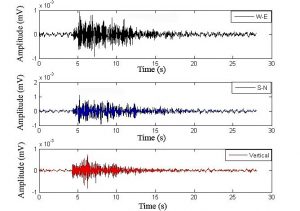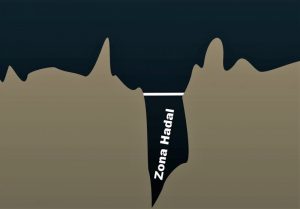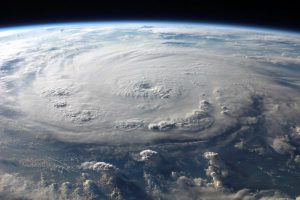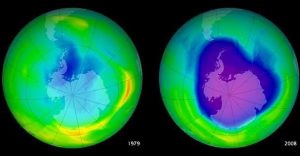Supercontinent
A supercontinent is the name given to a single continental land mass which is formed by all or most of the continental lithosphere at that time. Apparently, scientists have discovered that there is a cycle of supercontinents that form and separate every 400 to 500 million years, which are driven by tectonic plates. Scientists estimate that there was a cycle of at least seven supercontinents on Earth. The last supercontinent, the famous Pangea, was formed about 300 million years ago and separated about 100 million years later. It is believed that within several hundred million years all continents will come together once again to form a new supercontinent.
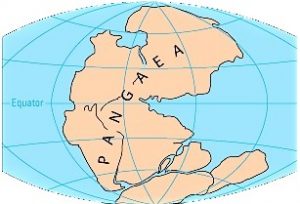
Related topics
Atlantic, Pangea, Vaalbara
What is a supercontinent?
The term supercontinent is a word from geological branch that is used to define large earth masses formed by two or more blocks of continents that by the movement of tectonic plates are displaced.
Characteristics of supercontinents
The main characteristics of the supercontinents are as follows:
- The first supercontinent was known as Panottia, approximately 600 million years ago.
- The best known that ever existed was the Pangea and the first division to emerge from it was Gondwana and Laurasia.
- They are formed because the earth is in constant motion.
- They block the exit of the internal heat that the earth has.
- It is believed that every certain number of millions of years the continents unite to form a supercontinent.
- Its shape is difficult to predict.
History
Continents are derived or formed by the movements of tectonic plates. These movements have taken millions of years throughout history to separate the super continents from what we have today. It is believed that from the time the planet earth was born, thousands of years passed until the lithosphere cooled enough to shape the oceans, and during this process, pieces of land emerged from the sea. From this theory it is supposed that the first supercontinent was born.
With the passage of time this continent was suffering changes and dividing little by little creating a new one. It is in this way that it is believed that the different supercontinents have arisen on earth, until reaching our current continents.
Supercontinental cycle
The supercontinental cycle is also known as Wilson cycle. It was proposed by John Tuzo Wilson and established that every 400 or 500 million years, the masses on earth unite, forming a supercontinent.
The cycle takes place through tectonic plate movements that cause continents to move, collide and ultimately solidify creating a large mass of continents. According to his theory, this happens on earth every certain number of years because the supercontinents exert pressure which prevents the internal heat in the earth from coming to the surface causing the earth to fracture and a new cycle to begin.
Effects of a supercontinent
Experts believe that the creation of supercontinents generates important climatic changes, dangerous and intense volcanic processes and cycles with very high levels of carbon dioxide that produce high temperatures and the greenhouse effect.
Examples of supercontinent
Below, we detail the supercontinents that have existed on earth:
- Vaalbara: It had its origin at the beginning of the Archaic Aeon. It was formed because the earth’s crust was colder, and some proto continents could have been formed. It is believed that Vaalbara was the first supercontinent on Earth and was divided approximately 2.8 billion years ago.
- Ur: It is believed that it was formed more than 3,000 million years ago at the beginning of the Archaic Although it was smaller than, say, Australia, it is considered a supercontinent because it is believed to be the only continent that existed at that time.
- Kenorland: It originated in the archaic Neo Age, about 2.7 billion years ago. It is believed that its location was at low latitudes and it was divided into smaller pieces during the late Neo archaic period and the Paleo protozoic period.
- Columbia: It is believed to have originated about 2.1 to 1.8 billion years ago.
- Rodina: It was a land mass that dominated the planet for about 200 to 350 million years and is one of the first best recognized supercontinents. It was formed about 1 billion years ago, when the most complex living beings were more than single-celled algae.
- Panottia: After the fragmentation of Rodina, 3 continents were formed called Protolaurasia, Protogondwana and the continental craton of the Congo. The Congo was placed between the first two and formed Panottia 600 million years ago, at the end of the Proterozoic.
- Pangea: This is the best-known supercontinent. It was formed 300 million years ago from other continents that resulted from the fragmentation of Panottia: Gondwana, Baltic, Siberia and Laurence. A large part was in the southern hemisphere and was surrounded by a large ocean called Panthalassa. During its existence, the planet experienced a great episode of mass extinction, but then dinosaurs and mammals were born.
How to cite this article?
Briceño V., Gabriela. (2019). Supercontinent. Recovered on 23 February, 2024, de Euston96: https://www.euston96.com/en/supercontinent/




